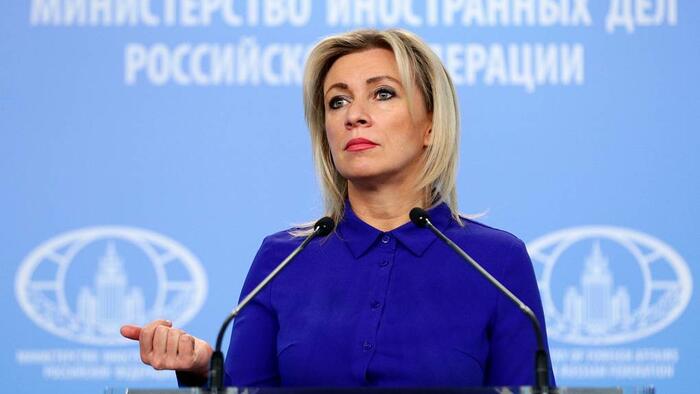On Thursday, Russia escalated the ongoing conflict in Ukraine by launching intercontinental ballistic missiles (ICBMs) for the first time during the war, reportedly targeting Dnipro, a central Ukrainian city. This development coincided with the U.S. and U.K.’s recent policies, which have allowed long-range strikes against Russian territory using western-supplied missiles. Despite these aggressive military actions, the Kremlin asserts its willingness to engage in peace negotiations. Maria Zakharova, spokeswoman for the Russian Foreign Ministry, emphasized in a press briefing that Russia remains open to evaluating any “realistic” peace proposal, one that considers Russia’s interests and the current state of affairs in the region.
Zakharova’s comments came in the wake of a senior Ukrainian military official revealing that Russia had launched an RS-26 Rubezh ICBM, which boasts a range of approximately 3,700 miles and can target any capital in Europe. The call for realistic negotiations framed by Zakharova is significant, as it highlights the Kremlin’s stance that any peace talks must align with its strategic objectives. She explicitly stated that these discussions should not be politicized but should focus on mutual interests and adherence to relevant agreements. This position underlines the tension surrounding the conflict, with the Kremlin remaining firm on key demands, including Ukraine’s renouncement of NATO aspirations and the surrender of four territories: Donetsk, Luhansk, Kherson, and Zaporizhzhia.
The idea of ceding eastern territories remains a contentious issue for Ukraine, with President Volodymyr Zelensky suggesting that this is an unacceptable condition. While there is an acknowledgment of former U.S. President Donald Trump’s desire to mediate a swift resolution, Zelensky has expressed skepticism about the feasibility of such rapid negotiations, fearing that a hastily brokered peace could be detrimental to Ukraine. The complexities of achieving a balanced solution are compounded by diverging interests among international players and the shifting dynamics on the battlefield.
Intriguingly, speculation is growing regarding the timing and motives behind the Biden administration’s current policy approach, amid concern that it might be steering toward a precipice of larger conflict. Some analysts wonder if the U.S. is aiming to solidify a strategic advantage for Ukraine ahead of a potentially different approach to international relations under Trump, who has voiced intentions of expediting peace talks. As a result, there is an atmosphere of uncertainty and increased tensions, especially as military escalations from Russia coincide with the West’s intensified support for Ukraine.
The introduction of Western long-range missile systems has notably changed the calculus of the conflict, adding layers of complexity to an already volatile situation. The prospect of further Russian military actions poses a significant risk as the conflict morphs into a higher-stakes confrontation. Observers highlight that the potential for escalation could lead to unforeseen consequences, with Russia potentially adopting a more measured approach while awaiting the outcome of the upcoming U.S. presidential election, and the possible return of Trump to the White House.
In conclusion, the conflict in Ukraine remains precarious, influenced by both military developments and the political landscape on an international scale. Russia’s missile launch marks a critical moment, showcasing its readiness to escalate further while reiterating its openness to negotiation. However, the stark differences between Russian and Ukrainian positions, especially regarding territorial integrity and NATO membership, continue to present formidable barriers to peace. The involvement of external powers, particularly the U.S. and its allies, adds to the intricacies, as strategies are recalibrated in light of an evolving situation that could dramatically shift with the upcoming election cycle. The uncertainty surrounding these geopolitical maneuvers underlines just how unpredictable and fraught the path to a resolution remains.

